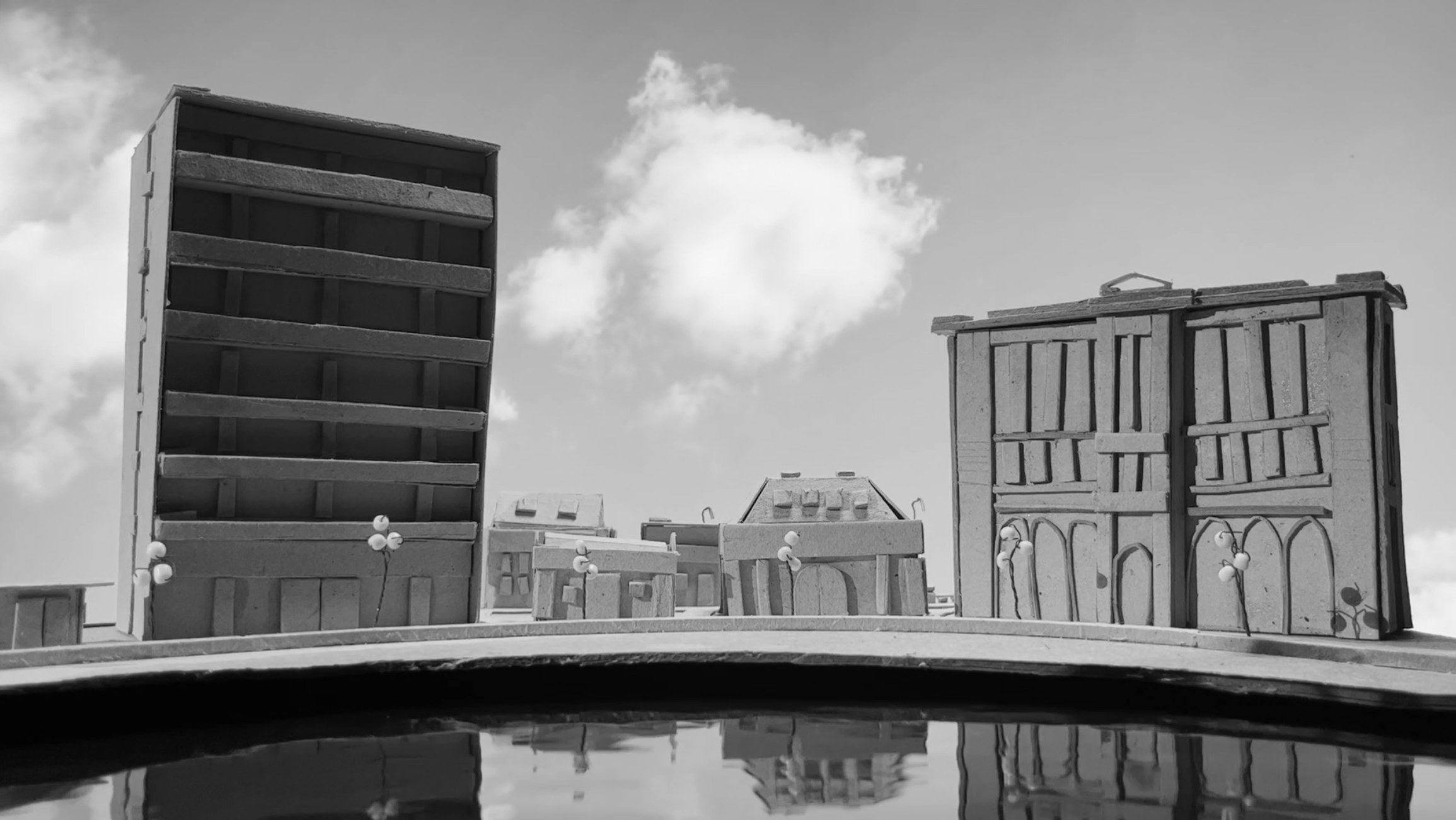↘
TRANSCONTINENTAL STORYTELLING
4000 Miles (1)
Human experiences interweave across great distances through the threads of storytelling. Even though the means and styles differ across the globe, stories and storytelling are unifying and inherent Human practices that help us understand and interpret the unnamable. As political theorist and philosopher, Hannah Arendt, writes, »Storytelling reveals meaning without committing the error of defining it.« By sharing stories, we find and make connections that ground us in time and space, and with today’s technology, we can easily exchange information in a variety of forms.The process of moving from digital to the analog realm creates a story of its own and narrative elements form as information changes state.
4000 Miles – Transcontinental Storytelling, is a collaborative short-term project between Herron School of Art and Design in Indiana, USA, and the Faculty of Design Würzburg (THWS), Germany. Students from both universities where challenged to share and developed narratives in various media that related to personal, curated artifacts.
The short term project is part of the Virtual Global Learning Exchange (VGLE). Bridging two institutions on two continents and two time zones, it aims to promote intercultural exchange and Blended Learning, focusing on linking physical and virtual learning environments for art and design practice. The teams consist of students of different senorities from the first to the seventh semester.
The course is a cooperation of Prof. Sydney Craig ↗ (Herron), Prof. Dr. Gesa Foken ↗ (h da) and Prof. Judith Glaser (FGW).
The course culminated in a visual art and design exhibition ↗ at the Marsh Gallery, Indianapolis, USA. Take a virtual tour ↗.
Winter Term 2023/24
↘
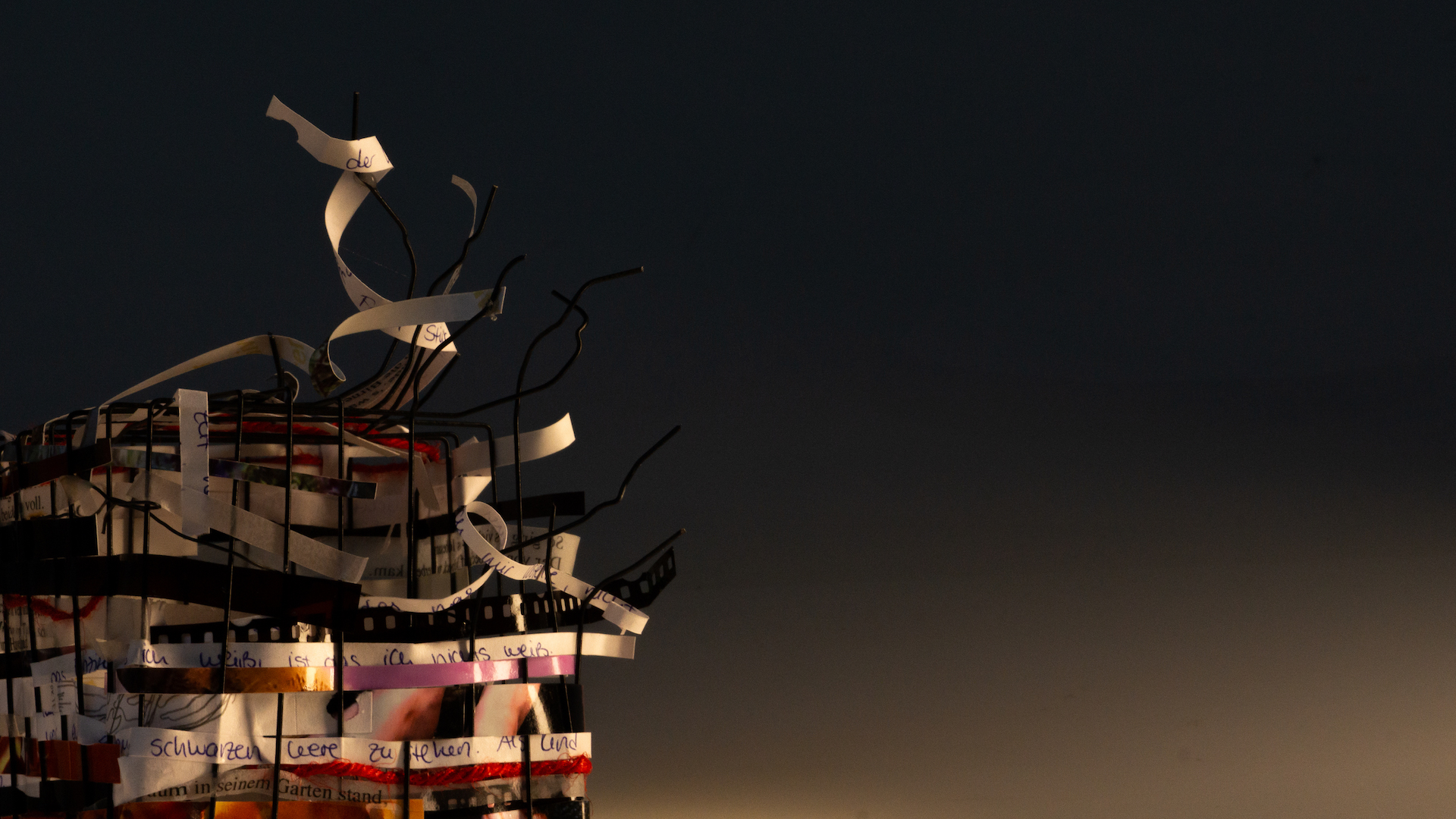
Afterlife
Katie Binz, Lena Breidenbach, Kheyarra Johnson
Each project uses visual imagery such as specifically chosen colors, symbols, forms, and text existing within planes of space that deliver their own separate narratives surrounding the same concept.

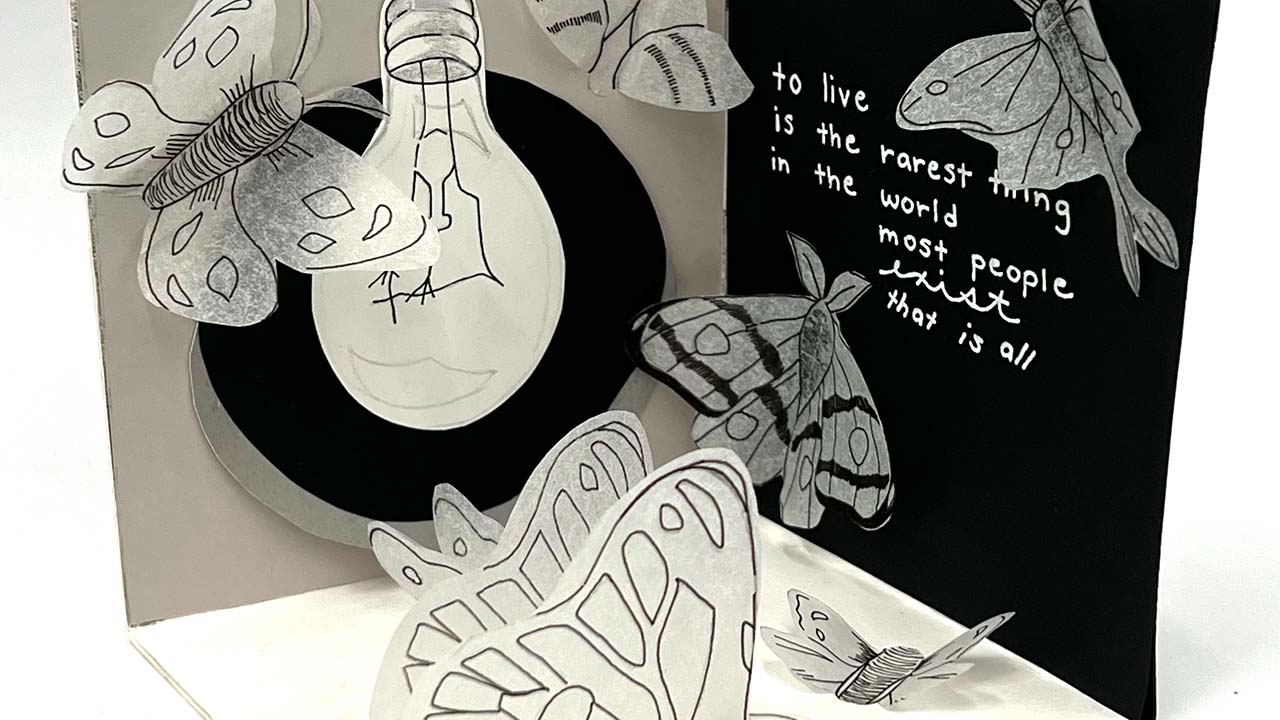

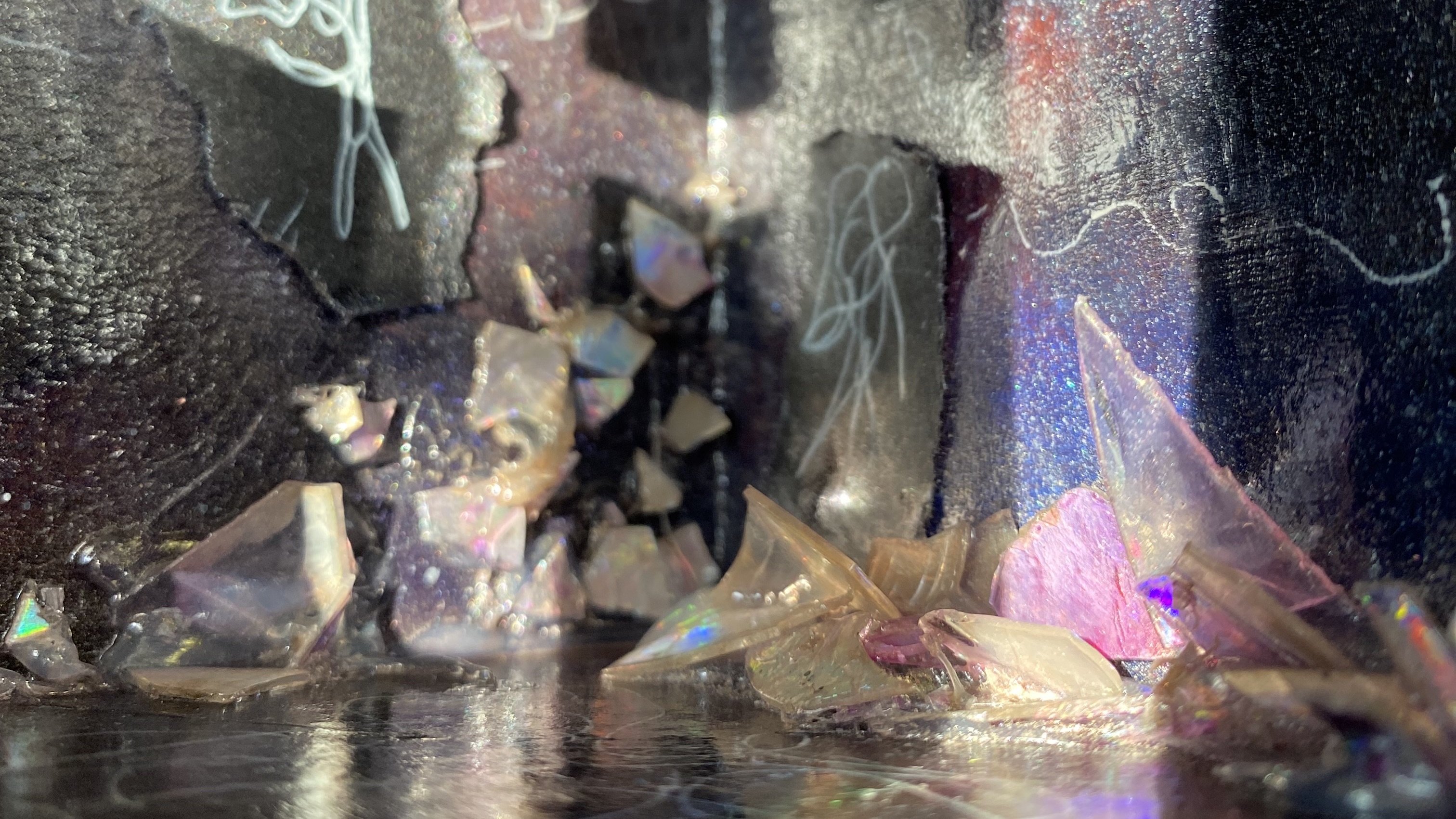
↘
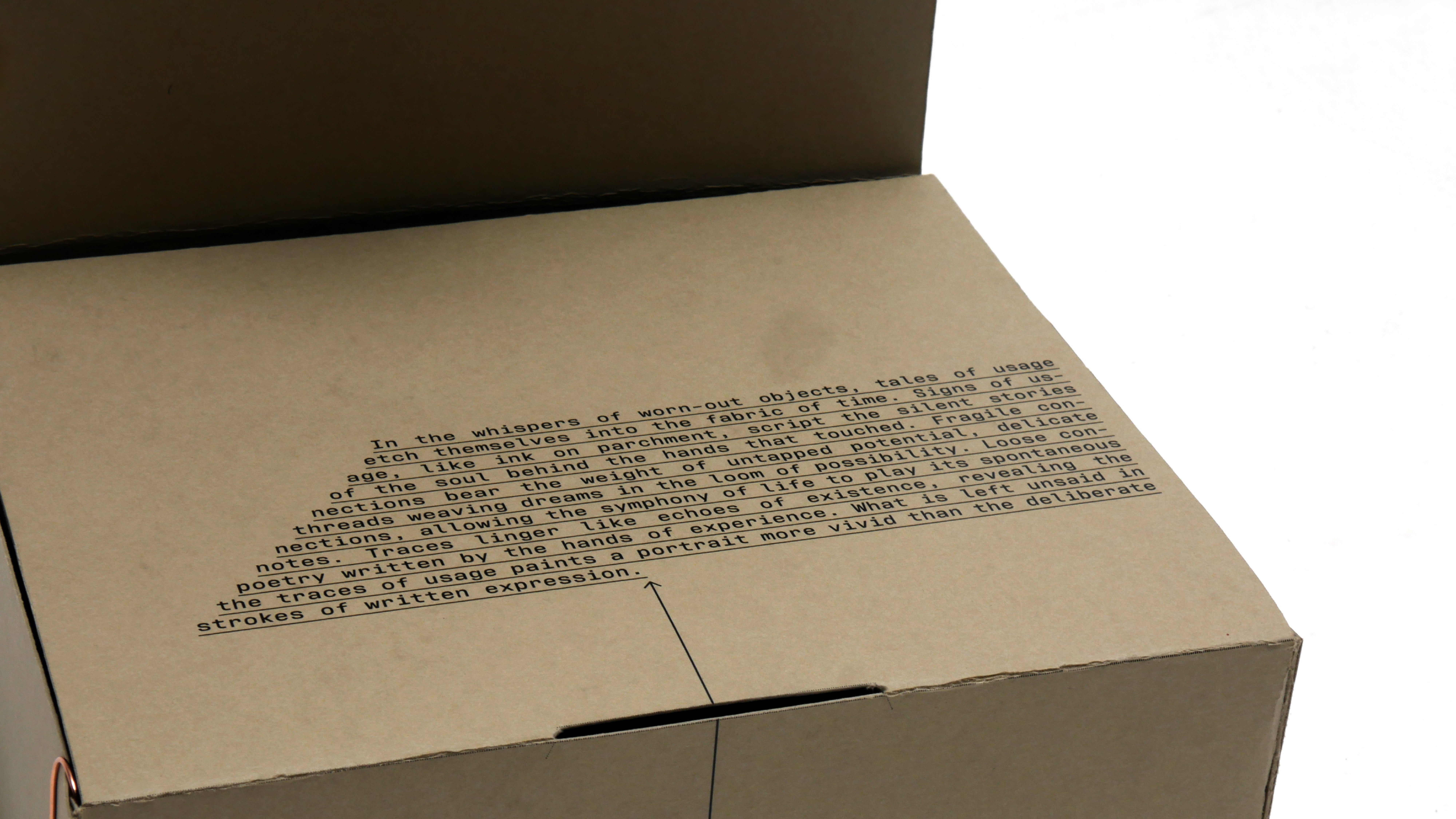
MindMingle-Box
Katina Newbern, Zoe Mallasch, Marinus Paul, Lea Sailer
Contemplating the challenge of supporting diverse inspirations into one cohesive space, we devised the concept of a physical box—a tangible repository for storing and exchanging thoughts. As a team distributed across different locations, we grappled with the issue of "missing" objects, leading us to employ placeholders to maintain continuity in our narrative.
To simulate the indelible mark left by an object, we delved into the design of the box itself. Each box, a testament to our collective creativity, boasts a carefully chosen quote that encapsulates the essence of our project.
We visualized the traces of these missing objects, using outlines and silhouettes to elegantly connect them within the confines of the box. This visual representation became a bridge between the physical and the conceptual, showing the interconnectedness of stories.
As the boxes traverse the physical and metaphorical distance, this collaborative collection becomes complete, so that the disparate yet harmonious stories come together in a tangible, shared space.


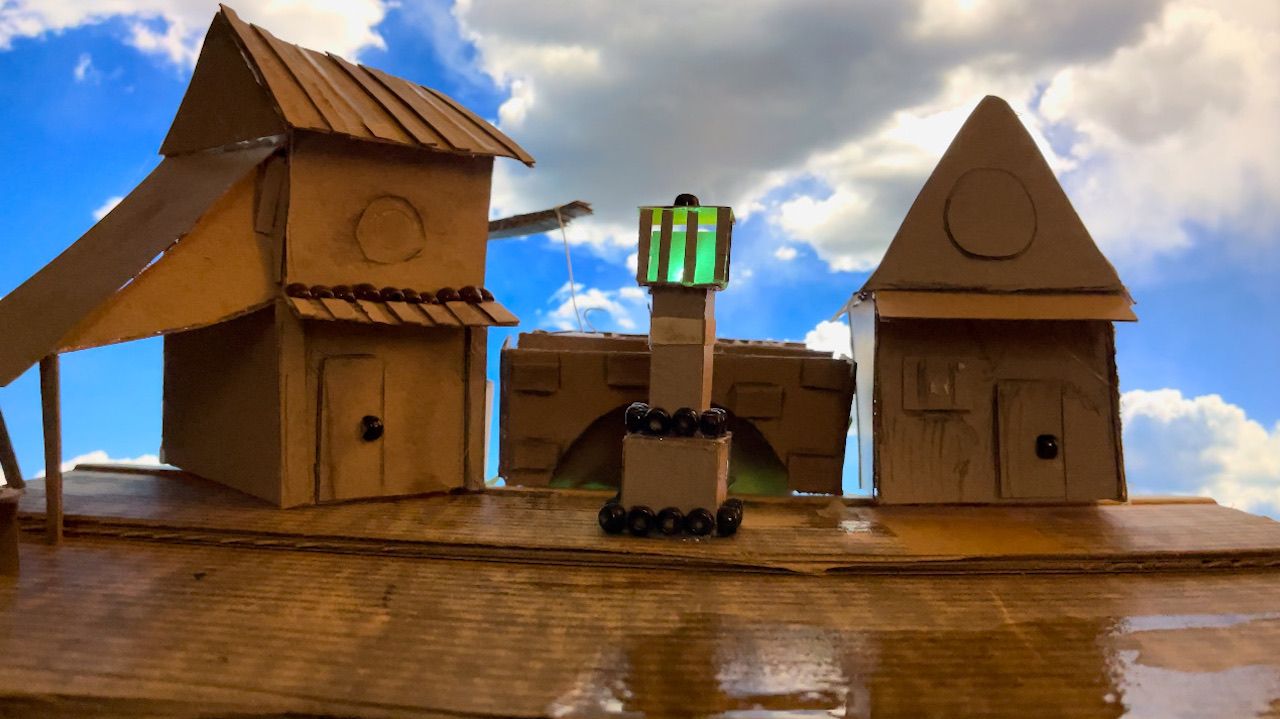

↘
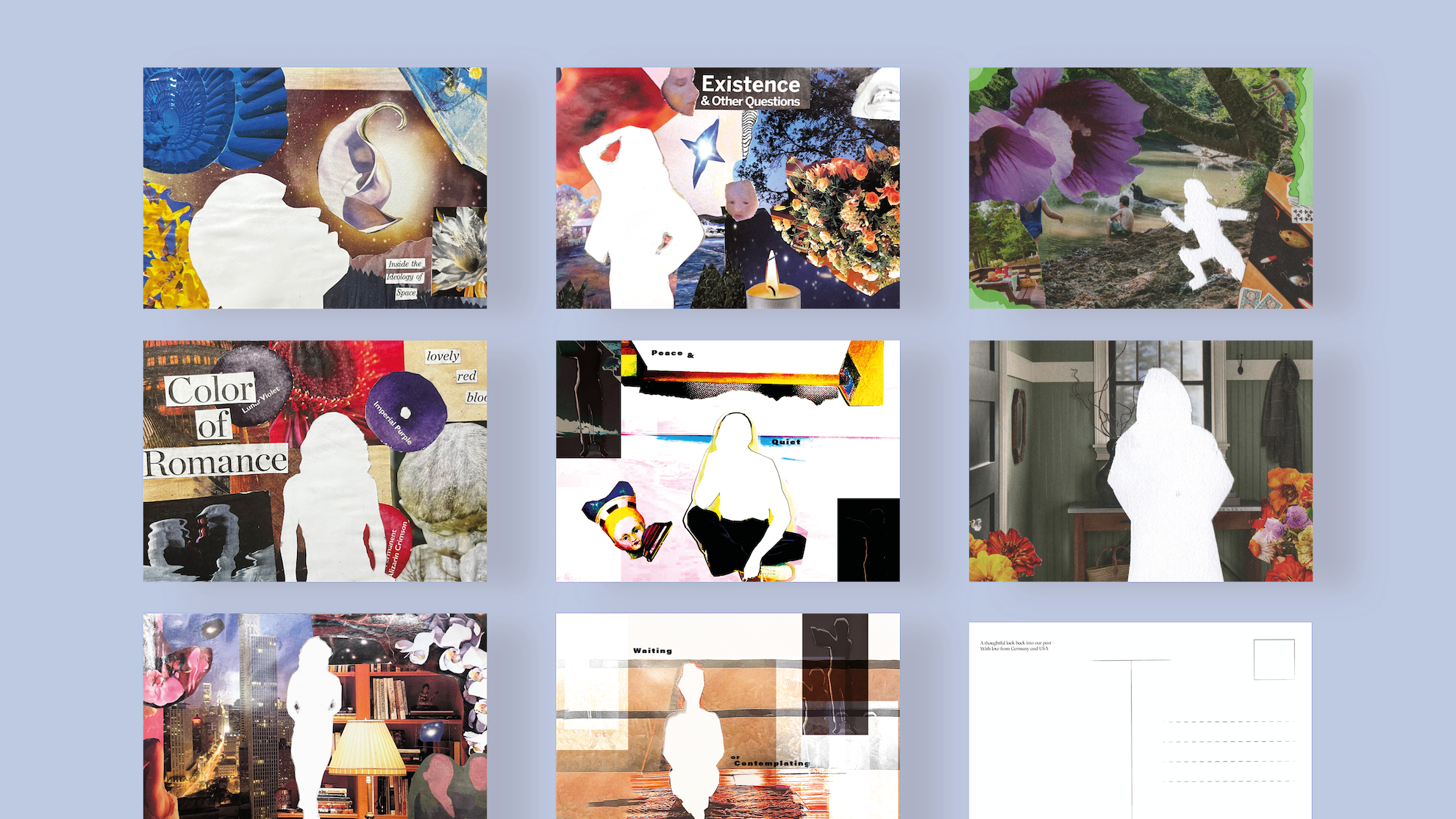
Nostalgic Memories
Isabella Parrales, Evgenia Vildenburg, Kate Smith, Kylie Sprout

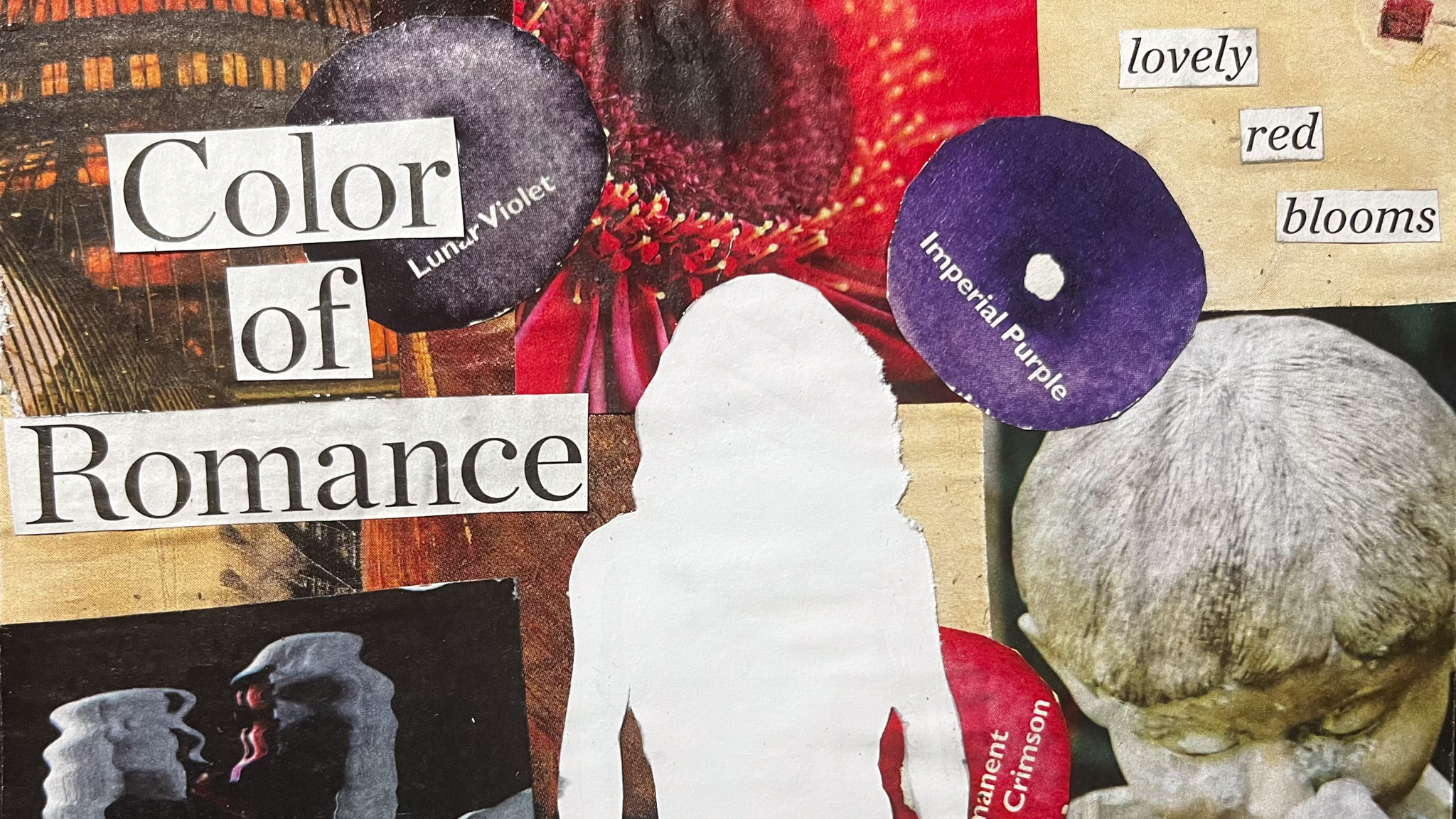


↘
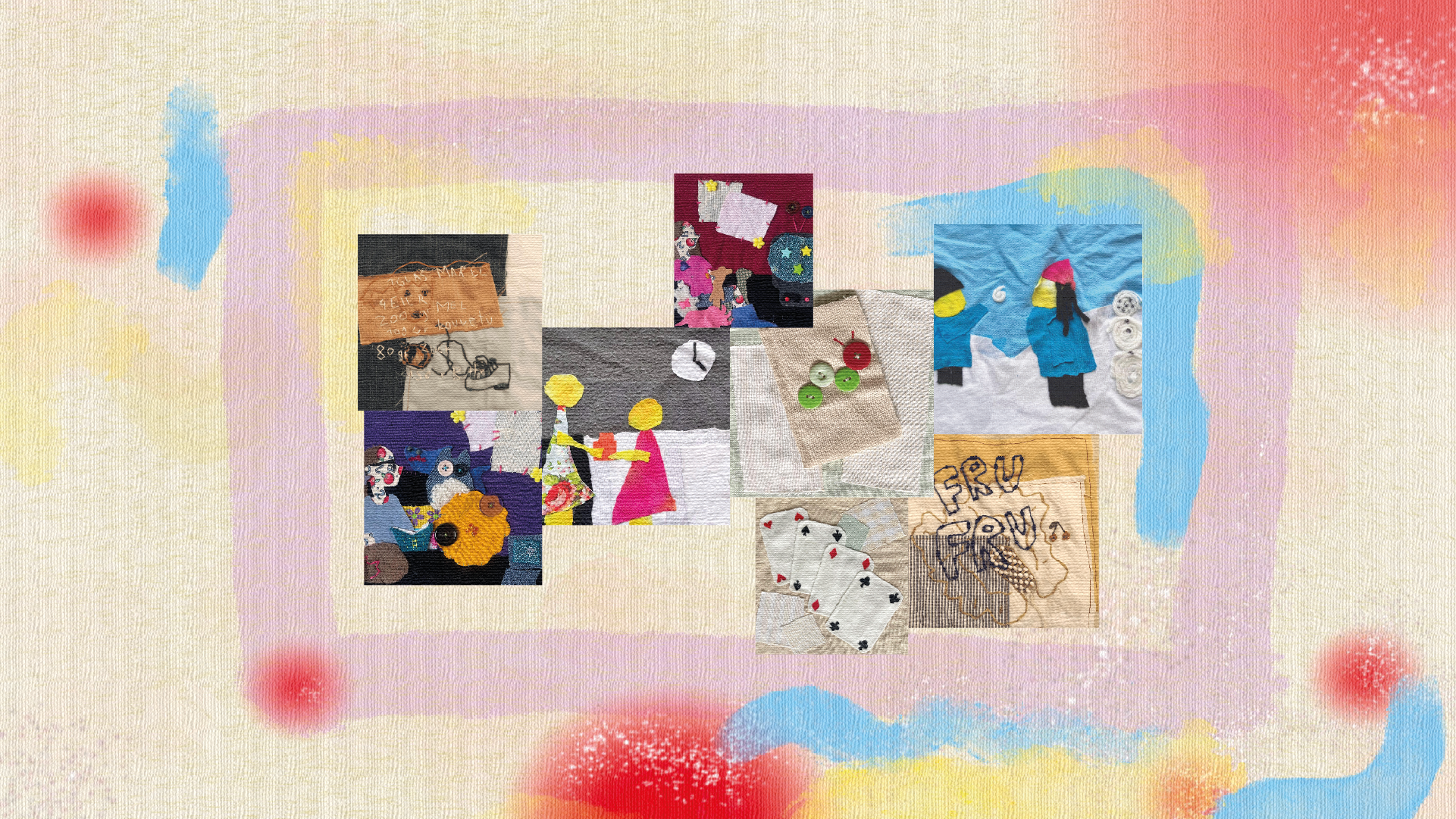
Fragments of early Lives
Lily Martin, Amelie Deimel, Josie Salinas, Maddy Meyer
Soft fabrics, complemented with embroidery and accessories such as buttons, create the landscape of fragments that we have tried to tell in words and images so far. Each of us designed two square patches measuring 8 inches x 8 inches.
In "fragments of early lives" an image has been created from symbols of cultures, memories and dreams; a new memory, a new story that will be told again at some point.
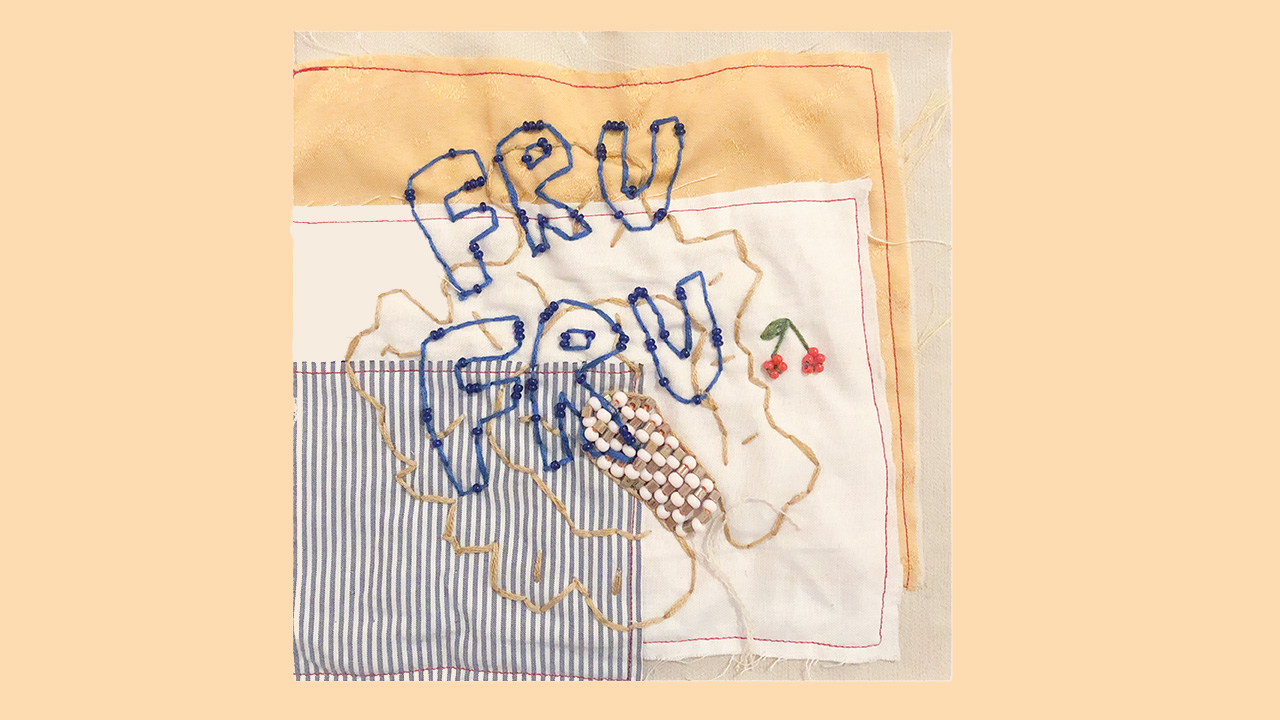
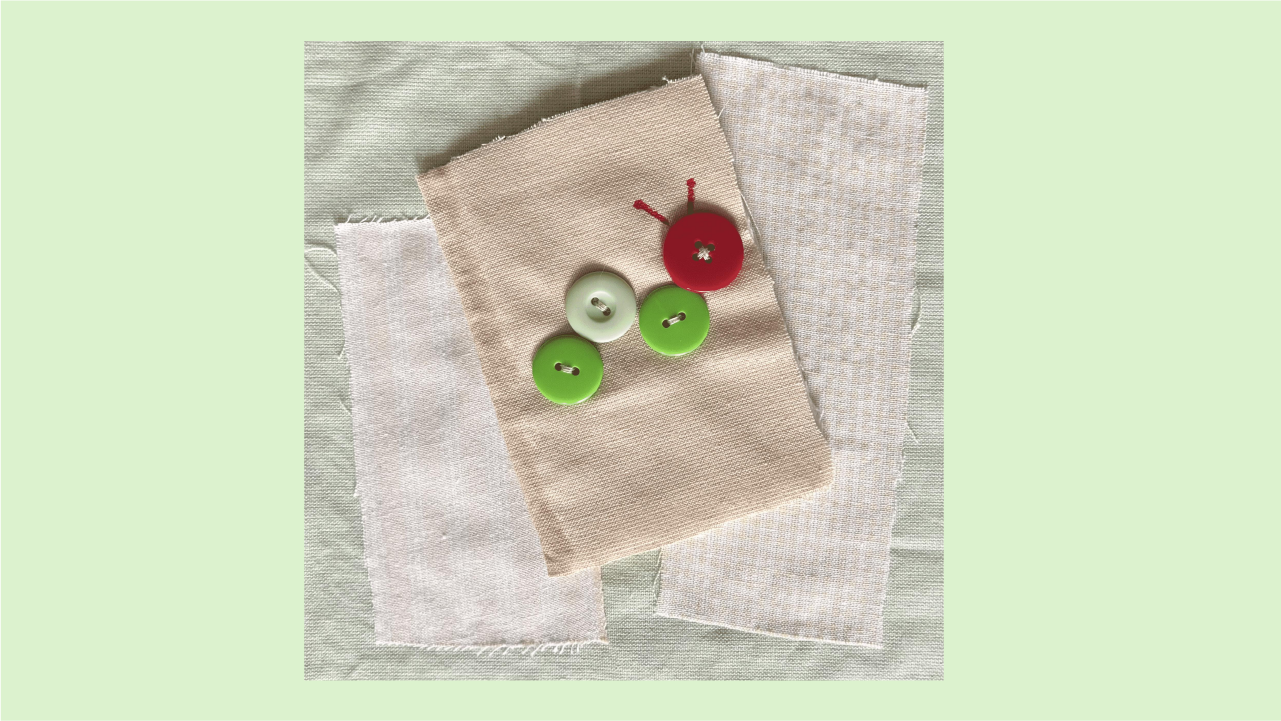

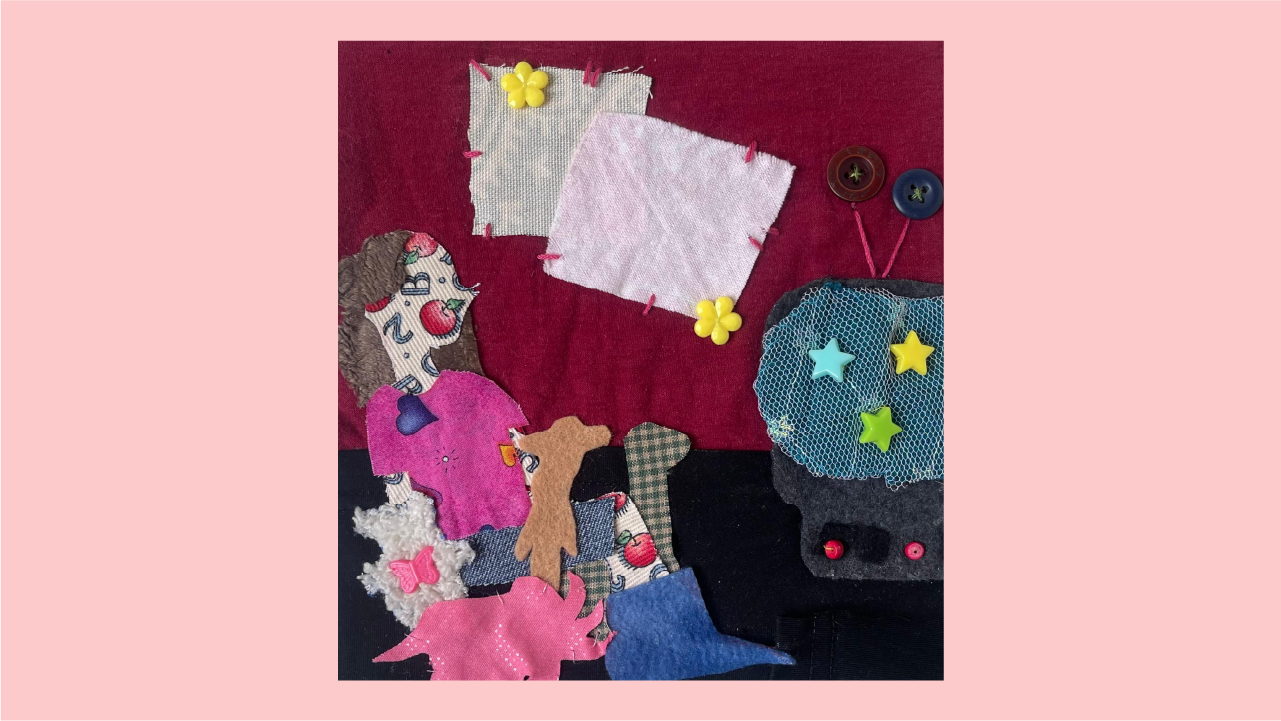
↘
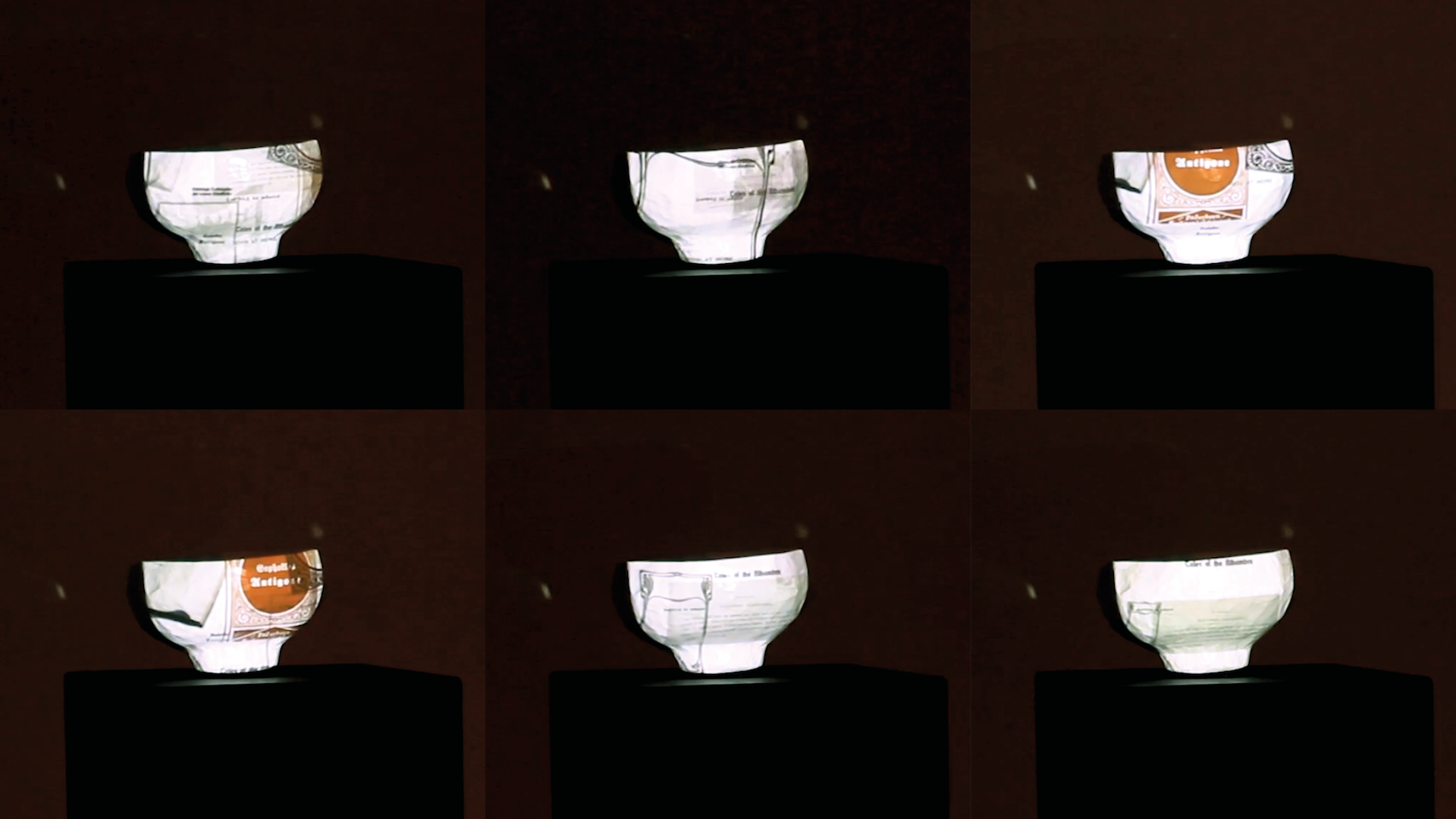
Inherent
Daniel Griggs, Marieke Schäfer, Sarah Grace Wiggins
“Inherent” is a project that aims to convey the connection of the human condition across culture and time; the idea that our humanity makes us all very much the same at our core.
We all went to an exhibition at a museum to gain inspiration– two of us to the same place in the United States and one of us in Germany. During our brainstorming and collection of ideas, a line was drawn almost immediately between the observations of all group members: the presence of bowls and/or ceramic items. Themes of the past and its connection to the present as well as the similarities between the cultures we saw became apparent.
We are not so different.


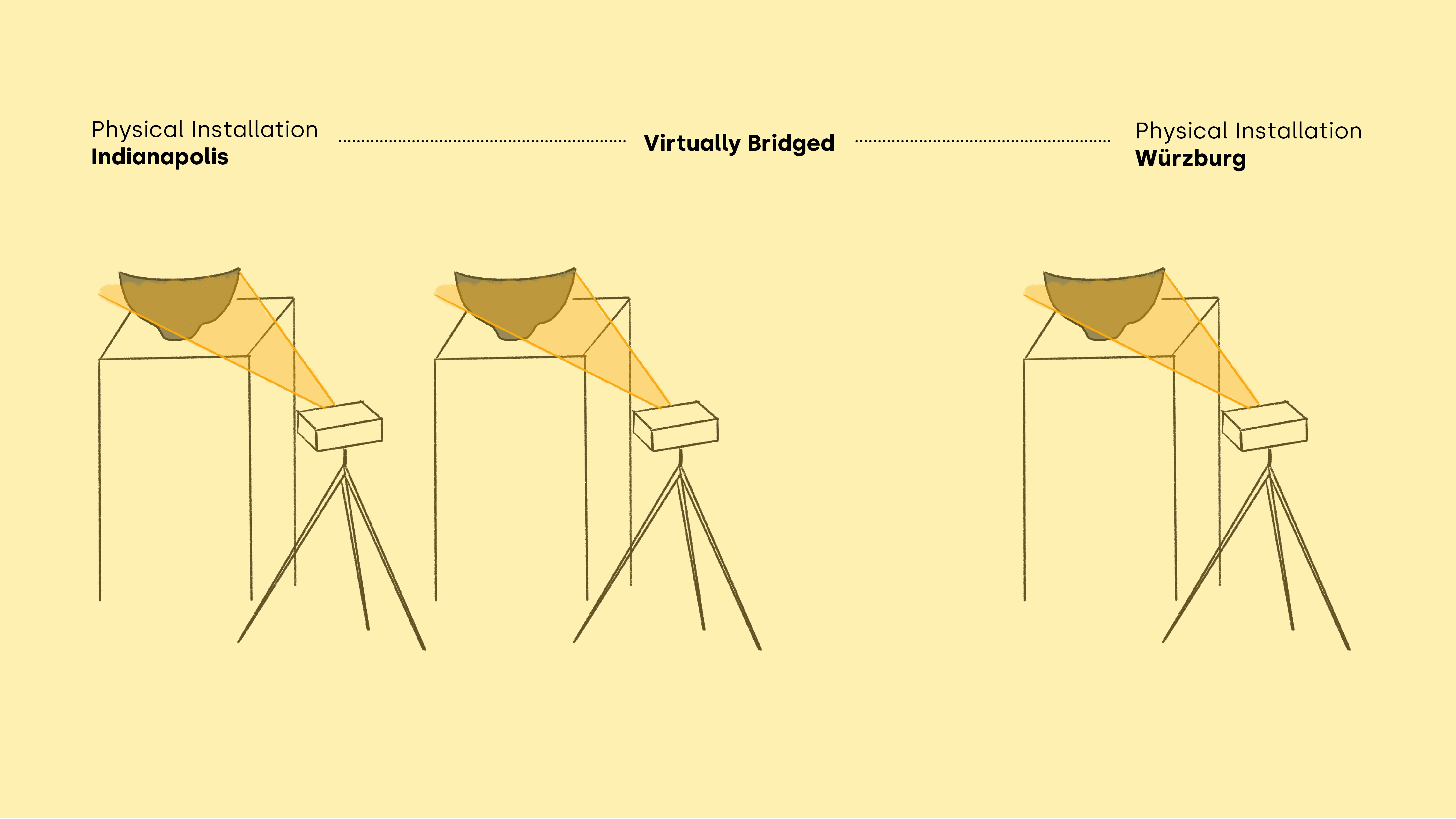
↘

What Was
Ade Azikwe, Pia Hafner, Marin McCoy
Anyone can take part and capture their own stories and moments. Whether pictures, sounds or videos, everything is safely preserved in our capsule. At the same time, it also serves as a gift for our future generations, with whom we can share our precious stories. In this digital age, where time often seems fleeting, the capsule gives us the opportunity to capture the meaningful moments of our lives forever.


